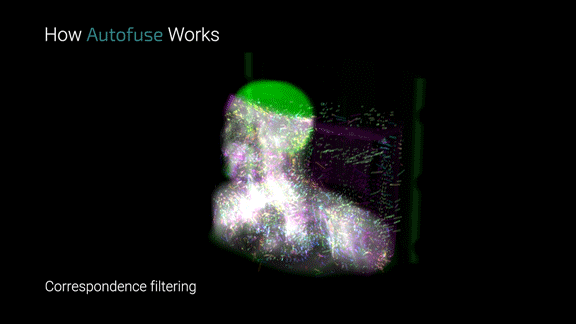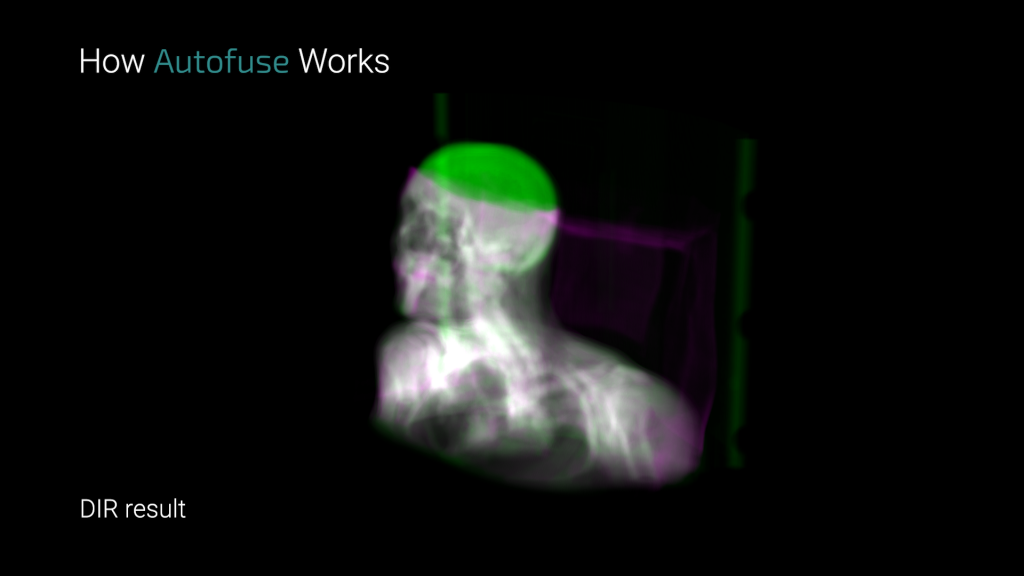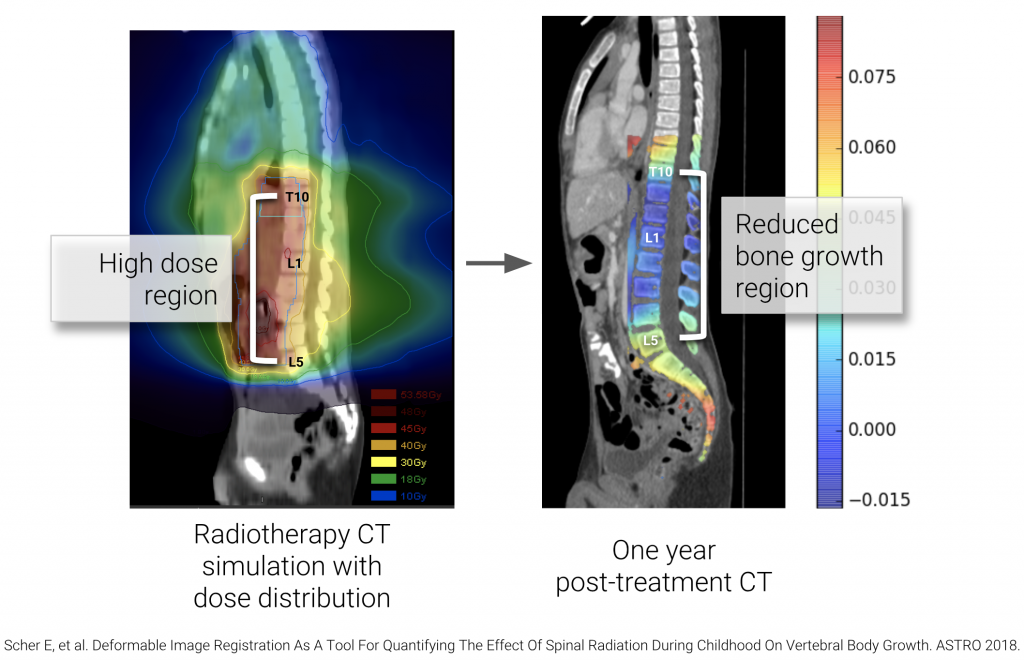Today we’re lifting the curtain on the machine perception technology behind Autofuse, and showing how it works step by step in a complicated head and neck case and a pediatric spine growth case using scans taken 31 months apart! We also provide a glimpse of the future of patient-specific QA for deformable registration, and how Autofuse technology can be used to monitor how radiation treatment to the spine affects vertebral body growth in children.
We start by loading a primary and secondary scan that we want registered. That’s it! Autofuse does the rest. It gets to work detecting thousands of features in each scan, then describes each one.
Autofuse is the first and only DIR technology that can quantitatively assess its level of confidence in the registration. In this case, it is 95% certain that the maximum average error lies within 8mm. The actual average error is, of course, much lower.
Autofuse’s extraordinary robustness allows for some new and novel things, like monitoring how radiation treatment to the spine affects vertebral body growth in patients treated to the spine as children.






1 thought on “Video Look Behind the Curtain at Autofuse”
Comments are closed.